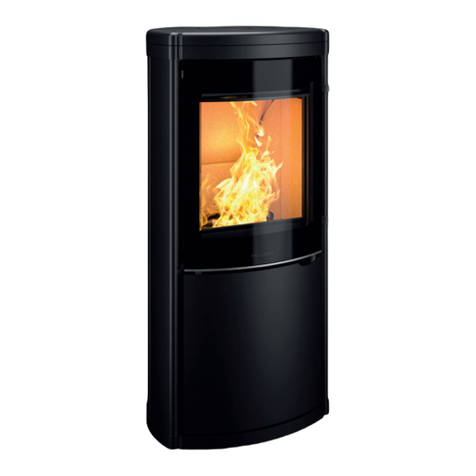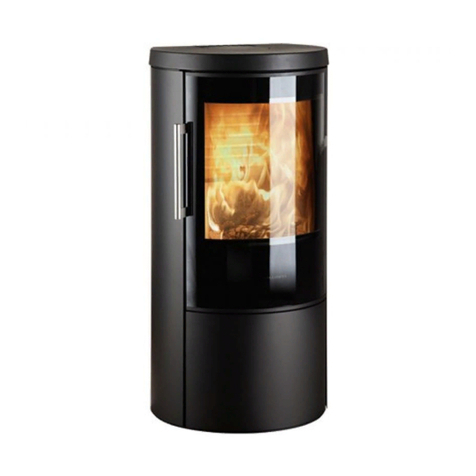
Page 10 of 20 pages
Model Weight Height Width Depth
HWAM 3630c/3630m 139/136 kg 114,8 cm 55,6 cm 44,2 cm
HWAM 3640c/3640m 139/136 kg 114,8 cm 55,6 cm 44,2 cm
HWAM 3640c/3640m with natural stone cladding 211/208 kg 114,8 cm 60,0 cm 44,2 cm
HWAM 3640c/3640m with soapstone cladding 229/226 kg 114,8 cm 60,0 cm 44,2 cm
HWAM 3650c/3650m 171/168 kg 150,8 cm 55,6 cm 44,2 cm
HWAM 3660c/3660m 171/168 kg 150,8 cm 55,6 cm 44,2 cm
HWAM 3660c/3660m w/heat-storing stone 260/257 kg 150,8 cm 60,0 cm 44,2 cm
HWAM 3660c/3660m w/soapstone cover 282/279 kg 150,8 cm 60,0 cm 44,2 cm
Heat storage stones, HWAM 3650+3660 55 kg
Floor plate
European, national and local regulations must be observed in terms of the size and thickness of a non-
combustible floor covering the floor in front of the combustion chamber opening. Ask your HWAM
retailer for assistance.The combustion chamber opening is 36.7 cm wide.
Distance to combustible materials
Min. distances - uninsulated flue gas pipe (drawing A) HWAM 3630
HWAM 3650
HWAM 3640
HWAM 3660
1. Recommended for brick wall, back, 10 cm 10 cm
2. Recommended for brick wall, side 15 cm 10 cm
1. For combustible back wall 10 cm 10 cm
2. For combustible side wall 40 cm 40 cm
1.To combustible wall,corner installation, 45º 35* cm 20* cm
3. Distance to furnishings in front, 90 cm 90 cm
*All dimensions in connection with corner installation are only recommendations. For UK: Please consult
a qualified and competent Installer for clarification.
Remember to pay attention to the applicable regulations concerning the required distance
between the wall and smoke pipe.
The distance to a brick wall is set to faciliate the servicing of the HWAM®Autopilot™.
Please be aware that not all glass parts are heat-resistant. For this reason, a glass wall should sometimes
be treated as a combustible wall, in which case we ask you to contact your local chimney sweep or glass
producer to hear at what distance the stove should be kept from glass.
Requirements for chimney and smoke pipe
The height of the chimney must ensure sufficient draught and prevent any smoke nuisance.As a general
rule, satisfactory draught conditions are achieved if the chimney is 4 m above the stove and at least 80
cm above the ridge. If the chimney is placed at side walls, the top of the chimney should always be higher
than the ridge or the tallest point of the roof.Always be aware of any national and/or local regulations
applying to thatched roofs and the location of the chimneys.
The woodburning stove requires a minimum draught of 1 Pa (measured at EN 13240 measurement point).
If measured just above the smoke flue socket, the chimney draught must be 17-19 Pa.
The chimney must have a minimum clearing of Ø 150 mm. The chimney must be provided with an
easily accessible cleaning door.The chimney and flue duct must be of flue class T400 and be CE marked.
Furthermore, it must have obtained the classification of G in soot fire testing.The required distance to
combustible material must be complied with in accordance with the brand label.Ask your HWAM retailer
for further information.





























